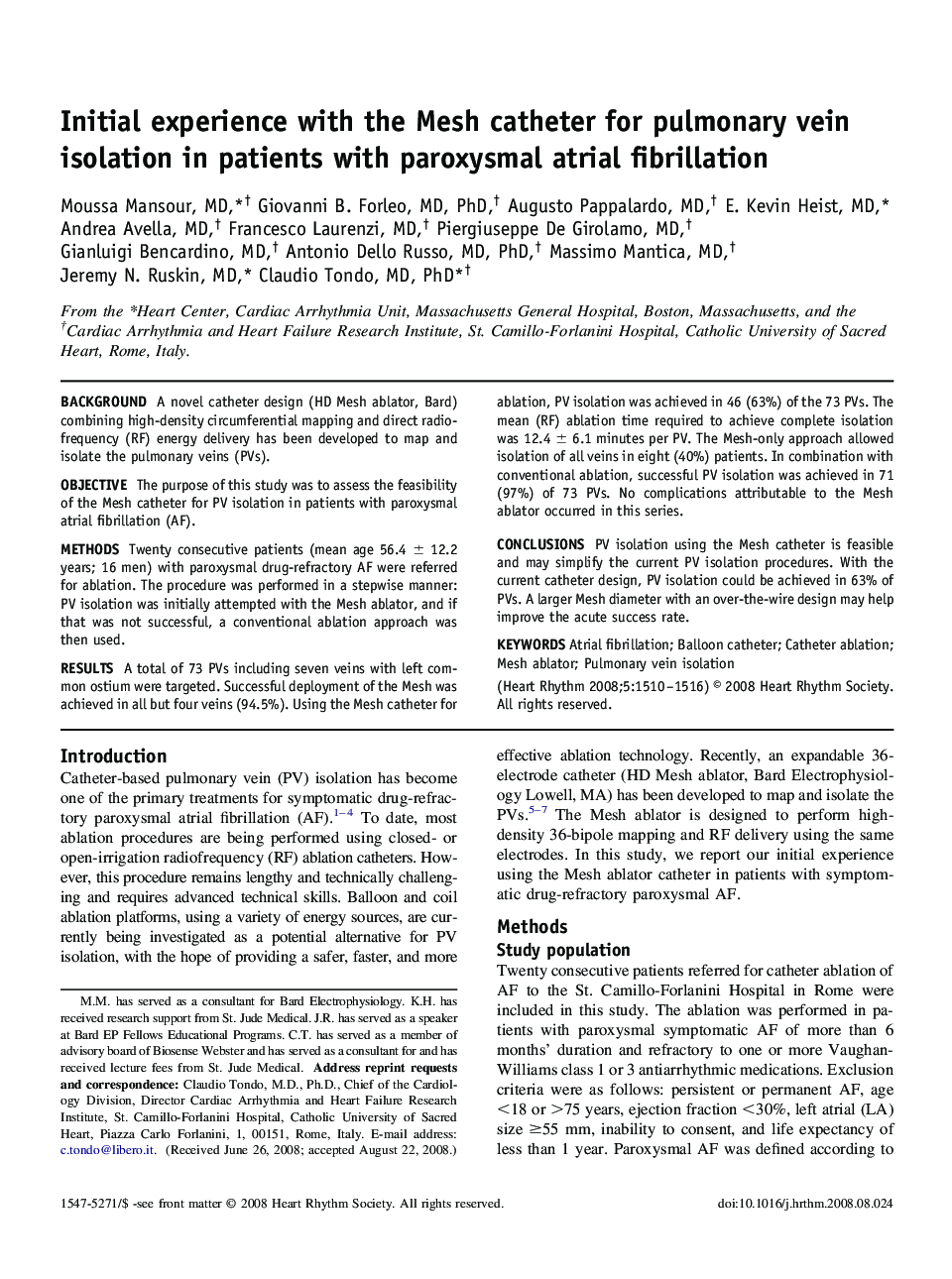| Article ID | Journal | Published Year | Pages | File Type |
|---|---|---|---|---|
| 2924701 | Heart Rhythm | 2008 | 7 Pages |
BackgroundA novel catheter design (HD Mesh ablator, Bard) combining high-density circumferential mapping and direct radiofrequency (RF) energy delivery has been developed to map and isolate the pulmonary veins (PVs).ObjectiveThe purpose of this study was to assess the feasibility of the Mesh catheter for PV isolation in patients with paroxysmal atrial fibrillation (AF).MethodsTwenty consecutive patients (mean age 56.4 ± 12.2 years; 16 men) with paroxysmal drug-refractory AF were referred for ablation. The procedure was performed in a stepwise manner: PV isolation was initially attempted with the Mesh ablator, and if that was not successful, a conventional ablation approach was then used.ResultsA total of 73 PVs including seven veins with left common ostium were targeted. Successful deployment of the Mesh was achieved in all but four veins (94.5%). Using the Mesh catheter for ablation, PV isolation was achieved in 46 (63%) of the 73 PVs. The mean (RF) ablation time required to achieve complete isolation was 12.4 ± 6.1 minutes per PV. The Mesh-only approach allowed isolation of all veins in eight (40%) patients. In combination with conventional ablation, successful PV isolation was achieved in 71 (97%) of 73 PVs. No complications attributable to the Mesh ablator occurred in this series.ConclusionsPV isolation using the Mesh catheter is feasible and may simplify the current PV isolation procedures. With the current catheter design, PV isolation could be achieved in 63% of PVs. A larger Mesh diameter with an over-the-wire design may help improve the acute success rate.
